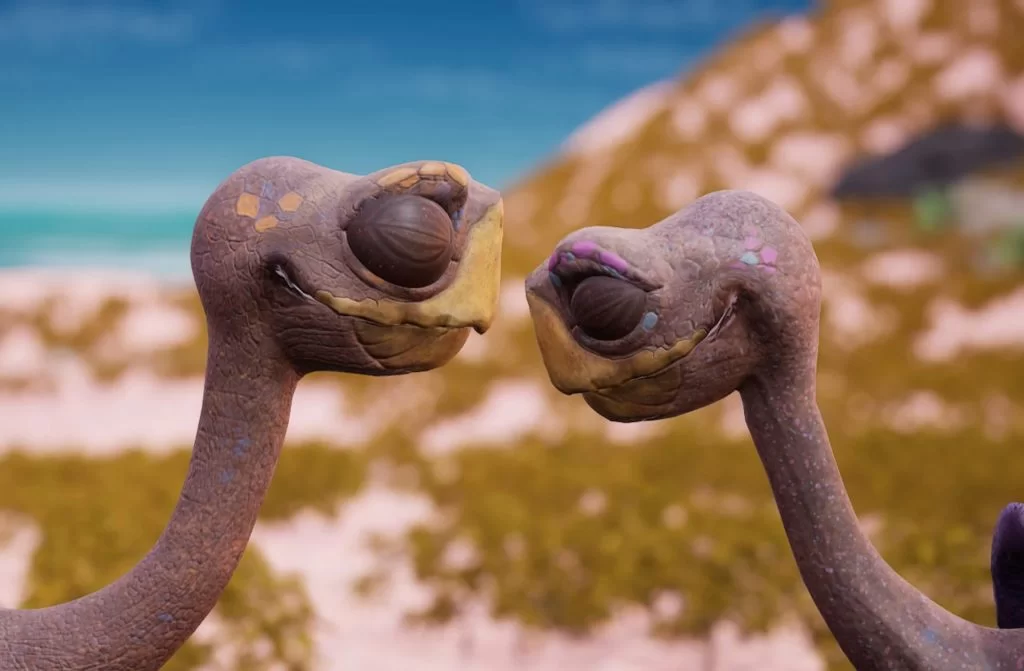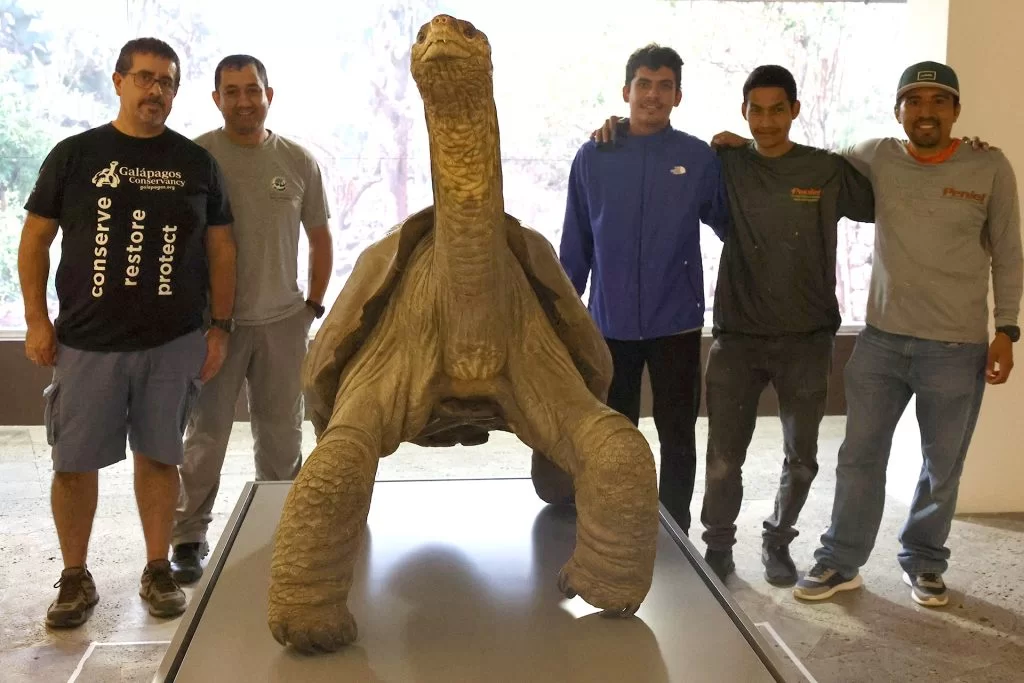Lonesome George
In an animated short film that highlights the importance of protecting threatened species, the iconic Galapagos tortoise (Chelonoidis Abingdonii) takes the spotlight. The “Lonesome George”, produced by Dorian Cambi & Andres Montasinos is expected to be an effective tool in raising awareness of the conservation efforts for Galapagos giant turtles.
George’s Story is an Insightful One
The lone tortoise, discovered on Pinta Island by a scientist in 1971 was thought to be the last specimen of its kind. Efforts were made for decades to find him a partner. In June 2012, it was revealed that he had died, highlighting the fragility and urgency of protecting endangered species.
George died without any descendants
Despite the Galapagos National Park Directorate’s (GNPD) relentless efforts to help him reproduce. The Galapagos National Park Directorate (GNPD) made multiple attempts to help him reproduce, including keeping the male with females taken from Wolf Volcano Isabela Island. All the eggs were not fertile. The subsequent attempts to breed females of the Espanola island species also failed.
3D Animation
This moving story is sure to inspire viewers to act for wildlife conservation. The 3D animated short highlights the importance of saving endangered species, and the vulnerability to ecosystems that are home to George.

Even after his death, Lonesome George continues to live on in the form of his legacy
After his death, the remains of George were taxidermized at the American Museum of Natural History, New York City. He returned to Galapagos, in February 2017. George’s remains are now displayed in the Symbols of Hope Hall, located at the GNPD giant tortoise breeding centre on Santa Cruz Island. This is a permanent reminder of the irreversible decisions humans make.
The Fausto Llerena Breeding Center is a vital location to learn about Galapagos giant turtle conservation. It is managed by the GNPD, in collaboration with Galapagos Conservancy. Since the center was opened in 1965 captive rearing has played a crucial role in restoring tortoise population. The rearing centers serve as a conservation tool, providing reproduction, incubation and rearing for the hatchlings. They also provide refuge for them, so they can grow up safely for five years. The juvenile tortoises are then released back onto their native islands once they have reached the physical requirements to survive.
Galapagos Conservancy’s role
It is crucial to be a strategic partner with the GNPD. We support conservation efforts to protect the Galapagos giant turtle populations. We also lead programs that reintroduce them into their natural habitats. This allows them to live free and fulfill their role of “ecosystem engineer” by restoring life on their island home.
Galapagos tortoises have become a symbol of conservation around the world
In 2022 we will launch the virtual Adopt A Giant Tortoise Program. This program creates a lasting relationship between a family or individual and a tortoise. Galapagos tortoises are known to live more than 100 years, so adopters’ children, grandchildren and great-grandchildren will form a lasting bond with Galapagos, as well as a strong connection to conservation. Tortoise adoptions include naming their tortoise, accessing a personalized webpage with biannual updates on their tortoise up until it is released into the wild and a page that allows them to keep in touch.
We commend “Lonesome” George’s producers for their contribution to the Galapagos Conservancy and GNPD efforts to protect endangered species on a long-term basis. The short film, which is captivating and educational, will help to teach the importance of protecting fragile eco-systems and their unique animals like George. Together, we can move closer to an era where Galapagos tortoises, and other threatened species, like George, thrive. Our ecosystems will remain healthy, allowing them to continue providing services to humanity.



